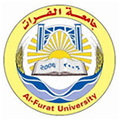آخر الأخبار
تقييم التنوع النباتي في منطقة محمية ومنطقة غير محمية في محافظة الرقة في شمال سورية
2010, Volume 1, issue 4,pp 194-221| Cite as
Evaluation of Plant Diversity in the protected and unprotected Areas in Raqqa Province in Northern Syria
| authors |
GHUFRAN KATTACH |
| Abstract |
More than half of the Syrian territory consists of arid and semi-arid steppe, receiving <200 mm of annual rainfall. This area is an important feeding resource for livestock. At present, however most of the steppe is intensively overgrazed by sheep and goats and suffers from soil erosion. The aim of the present study was to evaluate plant diversity under protected and overgrazing conditions in the dry area. The results showed high plant diversity in the protected area amounted to 123 species belonged to 98 genera and 31 families plant. While the number of species in the grazed area decreased to 32 species belonged to 31 genera and 16 families. In the protected area the family Asteraceae was represented by 27 species, while the family Poaceae and Fabaceae were represented by 16 ans 14 species respectively. In the grazed area 7 species belonging to the Asteraceae and 5 species belonging to Poaceae were found. The family Fabaceae, which is one of the important factions of the pasture and the ecosystem it has been the only two species. In the protected and grazed area, Therophytes were the most abundant life forms (54% and 56% of the total species).while Geophytes were the least presence life forms (5 % and 6 % of the total species) in the both areas. The qualitative composition of the vegetation cover varied between the protected and grazed areas, while the palatable species as Achillea membrancea, Salsola vermiculata, Poa bulbosa, Stipa barbata and Onobrychis ptolemaica disappeared from the grazed area and increased the unpalatable species as Peganum harmala, Haloxylun articulatum and Noaea mucronata. |
| الكاتب |
غفران قطاش |
| الملخص |
تشغل المناطق الجافة أكثر من نصف مساحة سورية، حيث يهطل اقل من 200 ملم من الأمطار سنويا. وتتعرض المراعي في المناطق الجافة لعوامل استغلال مكثفة مثل الزراعة، واحتطاب الشجيرات الرعوية والرعي الجائر. الأمر الذي أدى إلى اندثار كثير من الأنواع النباتية والحيوانية ، كما أصبح كثيرمن الحيوانات النافعة مهدد بالانقراض. لهذا هدف البحث إلى تقييم التنوع النباتي في مراعي المناطق الجافة تحت ظروف الحماية والرعي الجائر. أظهرت النتائج ارتفاع التنوع النباتي في المنطقة المحمية وصل إلى 123 نوعا تتبع إلى 98 جنسا وإلى 31 عائلة نباتية. في حين انخفض عدد الأنواع في المنطقة المرعية إلى 32 نوعا تتبع إلى 31 جنس و 16 عائلة. ساد في المنطقة المحمية والمرعية طراز الحياة Therophytes (54 و 56% على التوالي)، في حين كان طراز Geophytes أقل الطرز الحياتية وجودا ( 5 و 6% على التوالي) في كلتا المنطقتين. كما تباين التركيب النبتي النوعي بين المنطقة المحمية والمنطقة المعرضة للرعي الجائر، حيث اختفت الأنواع المستساغة من المنطقة المعرضة للرعي مثل Achillea membrancea و Salsola vermiculata و Poa bulbosa و Stipa barbata و OnobryChis ptolemaica وزيادة الأنواع غير المستساغة مثل Pegal1Unt harmala و Haloxyluri articulatini و Noaed mucroFatal. وبينت النتائج أن51.1 % من سطح التربة في المنطقة المحمية كان مغطى بالنباتات الحية و 11.98%مغطى بالبقايا النباتية، وتباينت المواقع معنوية (P< 0.01)، أما في المنطقة المرعية فقد غطت النباتات فقط 22.59%من سطح التربة ولم يزد متوسط تغطية البقايا عن 2.1%، أي أن 75.31%من سطح التربة كان معرضا للانجراف وبالتالي تدهور التربة. بلغ متوسط الكثافة النباتية في المنطقة المحمية 119 نبات/م. في حين انخفض المتوسط في المنطقة المرعية 58 نبات/م وتباينت المواقع معنويا ( P<0.01)أكدت نتائج التحليل الإحصائي وجود علاقة ارتباط موجبة ومعنوية بين الغنى النوعي وكل من التغطية النباتية (** 0.753) والكثافة النباتية (** 0.821) ومعامل شانون (** (**0.909)ومعامل سمبسون ( ** 0,793)
الكلمات المفتاحية: التنوع الحيوي النباتي، مراعي المناطق الجافة، تأثير الرعي، طرز الحياة النباتية، دليل التنوع النباتي |














